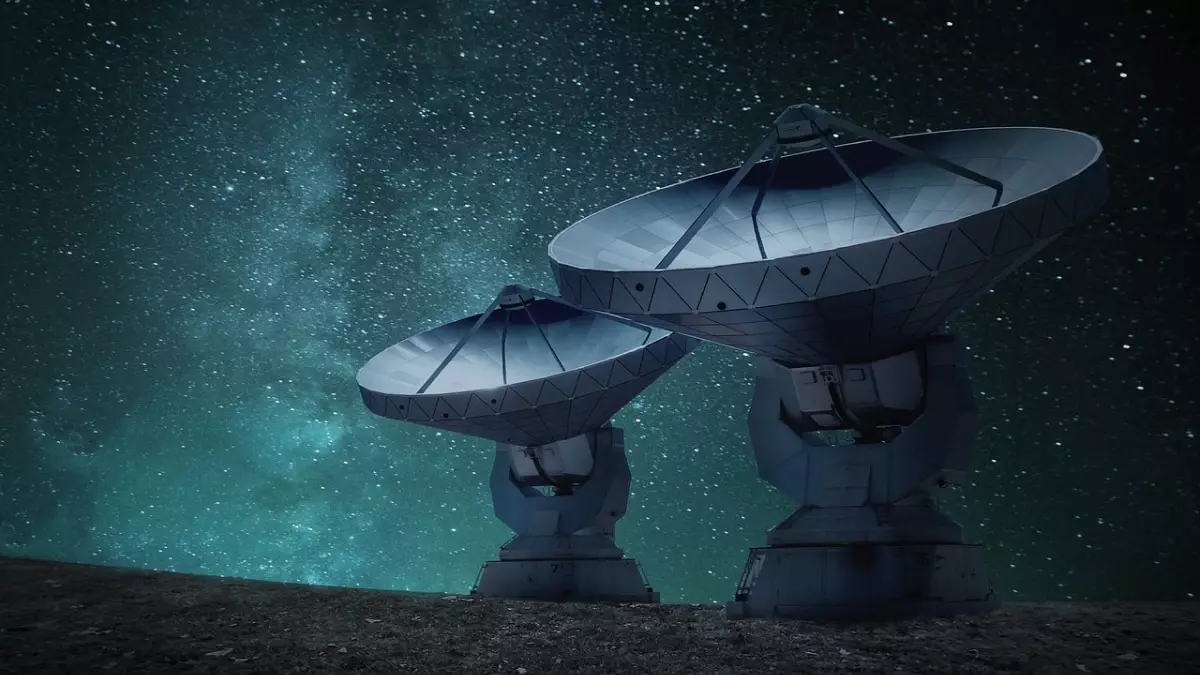In an era where connectivity is more crucial than ever, Elon Musk’s Starlink satellite network stands out as a revolutionary initiative designed to bring high-speed internet access to remote and underserved areas of the globe. However, this ambitious project has brought with it unforeseen challenges, particularly for the world of astronomy. The interference caused by Starlink satellites has become increasingly problematic for astronomers, threatening to compromise years of research aimed at unraveling the mysteries of the universe.
Scientists, especially those from the Netherlands Institute for Radio Astronomy (ASTRON), have expressed grave concerns about the growing Starlink constellation. These satellites, currently orbiting approximately 550 kilometers above Earth, are generating electromagnetic emissions that disrupt radio waves essential for astronomical observations. This interference is not merely an inconvenience; it poses a serious threat to the study of deep space objects. Astronomers rely on these radio signals to explore phenomena such as black holes, distant galaxies, and exoplanets that are billions of light-years away.
Professor Jessica Dempsey, the Director of ASTRON, emphasizes the alarming intensification of interference with the introduction of the second-generation Starlink satellites, which have been found to emit radiation levels up to 32 times greater than earlier models. Such significant noise in the radio spectrum blurs the faint signals that scientists seek to capture, jeopardizing critical research efforts aimed at expanding our understanding of the cosmos.
The ongoing expansion of the Starlink fleet, projected to surge beyond 100,000 satellites by 2030, generates mounting anxiety within the astronomical community. Cees Bassa, a central figure in investigating Starlink’s impact, draws a vivid comparison between satellite emissions and the brightness of a full Moon, dwarfing the dim stars that astronomers aim to study. This scenario fosters an environment in which essential astronomical research may become increasingly difficult, if not impossible.
Moreover, Robert Massey, Deputy Executive Director of the Royal Astronomical Society, underscores the pressing need for immediate interventions from SpaceX to mitigate the interference. Suggestions for practical solutions range from redesigning satellites to implement better shielding for battery emissions to reduce detrimental radiation outputs. Without these proactive measures, the future of ground-based astronomy could face dire challenges, limiting the means through which scientific inquiries into the universe can be pursued effectively.
As the foremost satellite provider, SpaceX holds a pivotal role in shaping the future of responsible space operations. If left unaddressed, the disruptions posed by the Starlink constellation could manifest as an existential dilemma for astronomical research. Scientists advocate for dialogue and cooperation between satellite operators and the scientific community to foster a harmonious coexistence that facilitates both technological advancement and the preservation of astronomical research integrity.
Moving forward, it is crucial that we recognize the dual-edged nature of rapid technological progress. While initiatives like Starlink pave the way for enhanced global connectivity, they also necessitate a reevaluation of their broader implications—especially concerning the preservation of scientific inquiry and our quest to explore the universe. The astronomical community’s call for action is not simply about protecting their field; it is about safeguarding humanity’s understanding of the cosmos for future generations.


Leave a Reply